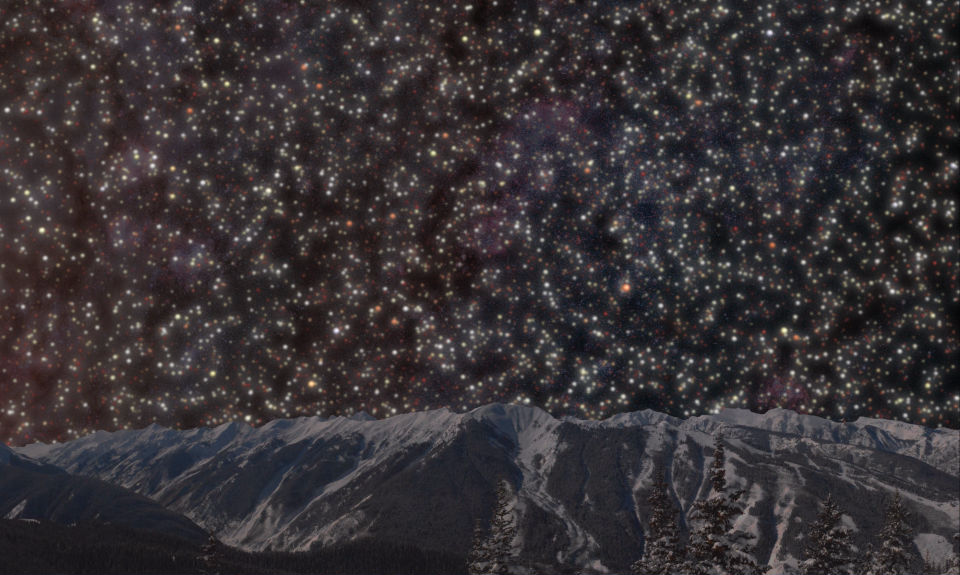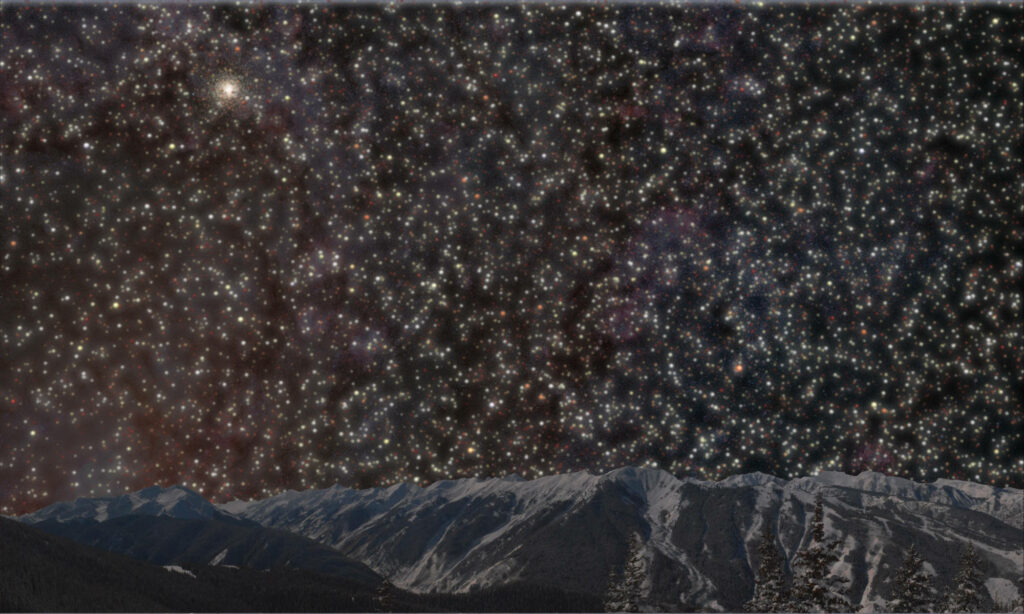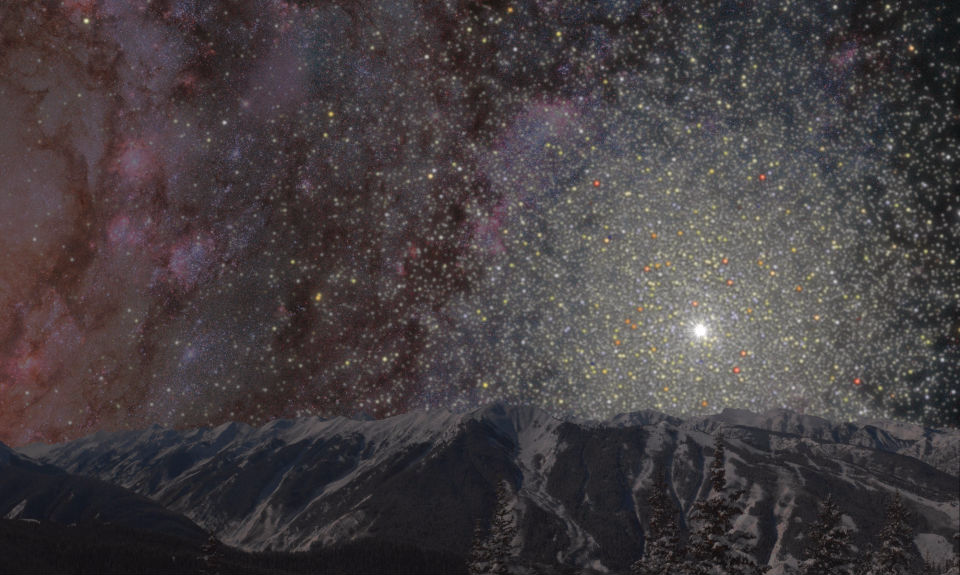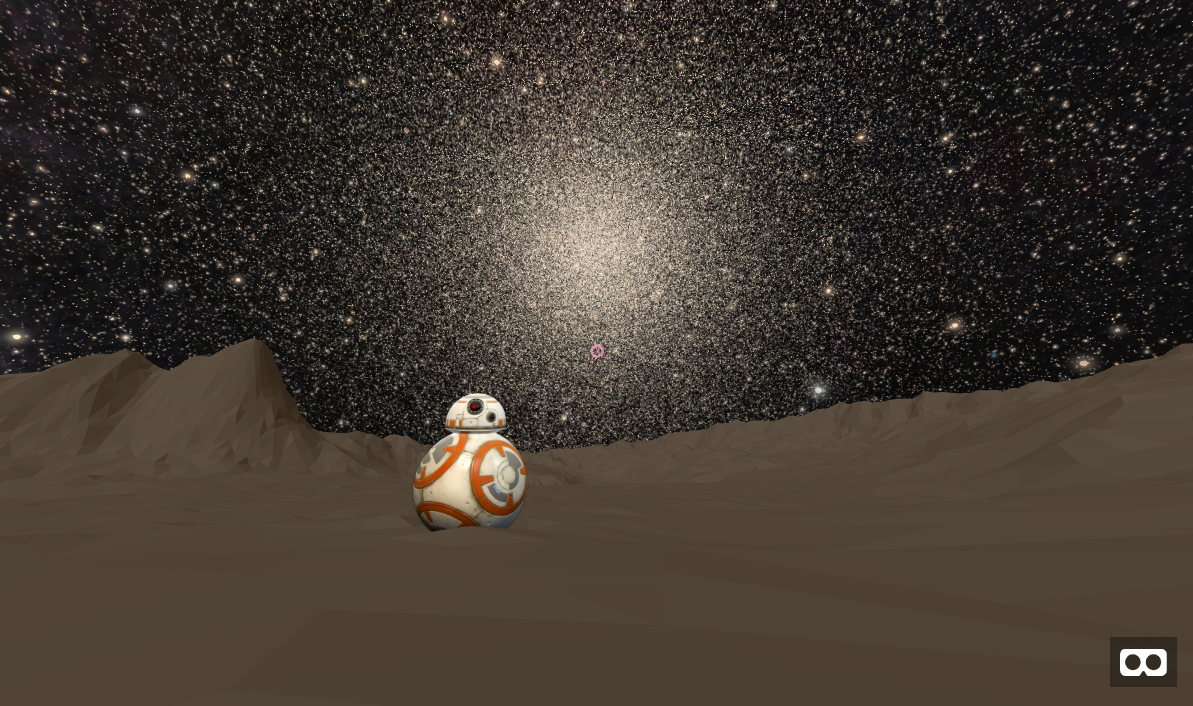For the July 2014 issue of Astronomy Magazine, Professor William E. Harris and I were asked to submit an article describing what life would be like if Earth was orbiting a star that lived within a globular cluster. For the article, we took dynamical simulations of globular clusters and placed our theoretical planet at various locations within the model.
Not only were we able to determine what life would be like for astronomers on such a planet, but we used our simulations to generate images of what the night sky would look like for anyone living inside a globular cluster. Place your cursor over the images below to learn more:

In the core of a globular cluster, the night sky would contain 130,000 stars visible to the naked eye and the brightest stars would be 100 times brighter than Venus. At night, the sky would be twenty times brighter than during a full moon.

Near the half-light radius of the cluster, the brightest object in the sky would be the main body of the cluster. However, far from the cluster center one would be able to faintly see distant globular clusters as well as the bulge and disk of the host galaxy.

In the outer regions of a globular cluster, you would still get a spectacular view when its center was in the night sky while still being able to perform astronomy at locations that faced away from the cluster at night.
More recently, with the help of UITS Research Technologies at Indiana University, we developed a 3D visualization of what the nighy sky would look like if you lived on such a planet. The visualization can be accessed here or by clicking on the screenshot below. The VR environment can be used with a mobile device aswell.

